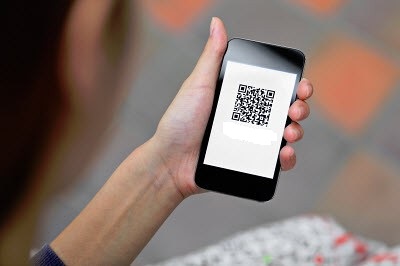A Bing Vision shortcut could provide greater ease of use for quick response codes.
Users of Windows Phone 8.1 based devices may find that it is now easier for them to be able to scan QR codes now that a number of changes have come along in the latest update to the operating system.
Of course, the quick response codes were far from the only change that was made in this update.
While some of the changes – such as the improvements for scanning QR codes – were more than welcome, there are others that people are finding will take some time so that they will become accustomed to them. For instance, Cortana does not have Bing Vision. However, that could be explained by the fact that it is still in its beta form. However, many are hoping that they will see that feature brought back, once more, into search.
That Bing service is used by people who scan QR codes on their smartphones.
 For those who aren’t sure where to find the feature for scanning quick response codes anymore, following the latest updates to 8.1, they simply need to know where to look. There are a number of ways to return the feature to its previous form, but it is still in existence on the phone, it is simply in a new location. Bing Vision is now present under the Camera Lenses. While it is just as functional as it ever was, it does require several steps in order to arrive upon it in its new location.
For those who aren’t sure where to find the feature for scanning quick response codes anymore, following the latest updates to 8.1, they simply need to know where to look. There are a number of ways to return the feature to its previous form, but it is still in existence on the phone, it is simply in a new location. Bing Vision is now present under the Camera Lenses. While it is just as functional as it ever was, it does require several steps in order to arrive upon it in its new location.
Therefore, many people are opting to find new and more convenient ways to scan QRcodes on their devices following the update. Among the most popular – following recommendations from several known and trusted mobile app bloggers and news sites – is QR for Cortana, by DreamTeam Mobile. It is a free shortcut app that provides greater streamlining for these barcode scans.
All it does is create a new Star Tile that brings the device user directly into the Camera Lenses location so that all of the other steps could be skipped. From there, the Bing Vision option is available and QR codes can be scanned at will.
New billboards and signs featuring quick response codes will be placed in locations worldwide.
Clear Channel, a company that currently has nearly 700,000 signs and billboards positioned in different spots around the globe is planning to add 75,000 QR codes to advertisements in areas that feature “heavy footfall and long dwell-time”.
This means that places such as bus stops, shopping malls, and airports will now see quick response codes.
The QR codes on the billboards will also have added SMS capabilities that make it possible to text people who are close by or to use near field communication (NFC) technology for the contactless transmission of information to devices that are located in close proximity. This converts the posters into a form of mobile marketing with considerable potential.
The QR codes and other technology will help to better connect with consumers who are on the move.
According to Clear Channel, the initiative, which they have called Connect, “presents the opportunity to target consumers on-the-go, when they are receptive to messages and can be delighted by timely, relevant and tailored invitations to engage.” That statement was made by the company’s chief operating officer, Suzanne Grimes.
These types of distractions, such as being able to scan a QRcode, are typically welcome in areas such as airports where people are looking for something simple to do in order to kill time. It isn’t something that they would likely do if they were in a hurry and were just walking from one place to another, but when they are forced to wait around, they will be far more willing to amuse themselves with activities such as barcode scans.
That said, to become effective, the ad needs to find some way to become noticed in the first place. Before consumers are able to scan QR codes, then need to actually realize that they’re there. It is in this area that Clear Channel has managed to stand out, as it has employed other technologies to draw more attention to itself and to make sure that its posters aren’t seen as simply passive atmosphere. This way, they become interactive features.
 For those who aren’t sure where to find the feature for scanning quick response codes anymore, following the latest updates to 8.1, they simply need to know where to look. There are a number of ways to return the feature to its previous form, but it is still in existence on the phone, it is simply in a new location. Bing Vision is now present under the Camera Lenses. While it is just as functional as it ever was, it does require several steps in order to arrive upon it in its new location.
For those who aren’t sure where to find the feature for scanning quick response codes anymore, following the latest updates to 8.1, they simply need to know where to look. There are a number of ways to return the feature to its previous form, but it is still in existence on the phone, it is simply in a new location. Bing Vision is now present under the Camera Lenses. While it is just as functional as it ever was, it does require several steps in order to arrive upon it in its new location.

